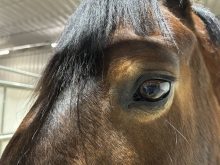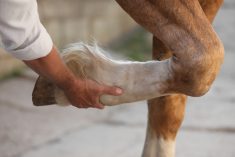- Non-contagious but infectious disease of horses, donkeys and mules;
- Viral disease which affects the animal’s immune system, something like HIV in humans;
- Symptoms include fever, anorexia, muscle weakness and wasting, swelling of the underside of belly and legs;
- Horses infected with the EIA virus carry it for life;
- Transmitted by larger bloodsucking insects, mainly horseflies and deer flies. Contaminated needles and surgical instruments can also spread the virus;
- Infected horses don’t necessarily show symptoms, but will still be ‘carriers’ and thus, a risk to other horses;
- No treatment or cure for EIA, and no vaccine to prevent it;
- Diagnosed by testing a horse’s blood, with the original test developed by Dr. Leroy Coggins in 1970;
- EIA is found around the world. It’s been in Canada since the 1800s;
- Control is based on voluntary testing, identification and destruction of infected animals.
What is equine infectious anemia?
Reading Time: < 1 minute















